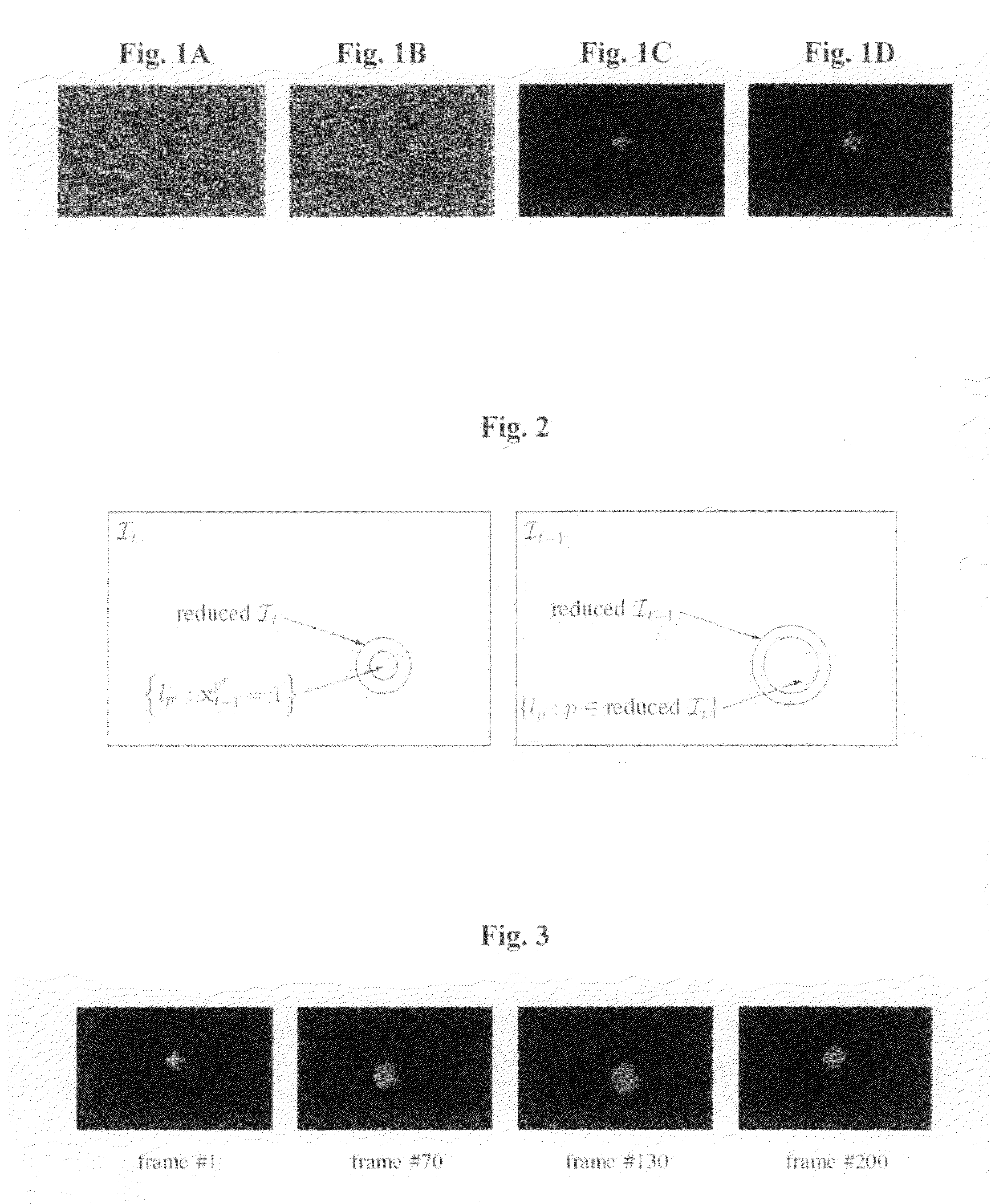Bitmap tracker for visual tracking under very general conditions
a bitmap tracker and visual tracking technology, applied in the field of visual tracking, can solve the problems of context-specific, trackers are not suitable, and the tracking is likely to fail without recovery, and achieve the effect of increasing the matching of the marking
- Summary
- Abstract
- Description
- Claims
- Application Information
AI Technical Summary
Benefits of technology
Problems solved by technology
Method used
Image
Examples
Embodiment Construction
[0039]In the following detailed description of various embodiments, reference is made to the accompanying drawings that form a part thereof, and in which are shown by way of illustration specific embodiments in which the invention may be practiced. It is understood that other embodiments may be utilized and structural changes may be made without departing from the scope of the present invention.
[0040]A. Overview
[0041]Every pixel in an image may be classified as belonging or not belonging to some particular object of interest according to the object projected to the pixel's center point. The tracker of the invention aims to classify each pixel in the movie frame whether it belongs to the target or not. Thus, the tracker's state space is binary images, i.e., bitmaps. The tracker works by estimating the target's bitmap at time t, given the movie frames at times t and t−1 and the estimate of the previous bitmap at time t−1(t=0; 1; 2, . . . ). Thus, after being initialized by the target'...
PUM
 Login to View More
Login to View More Abstract
Description
Claims
Application Information
 Login to View More
Login to View More - R&D
- Intellectual Property
- Life Sciences
- Materials
- Tech Scout
- Unparalleled Data Quality
- Higher Quality Content
- 60% Fewer Hallucinations
Browse by: Latest US Patents, China's latest patents, Technical Efficacy Thesaurus, Application Domain, Technology Topic, Popular Technical Reports.
© 2025 PatSnap. All rights reserved.Legal|Privacy policy|Modern Slavery Act Transparency Statement|Sitemap|About US| Contact US: help@patsnap.com



